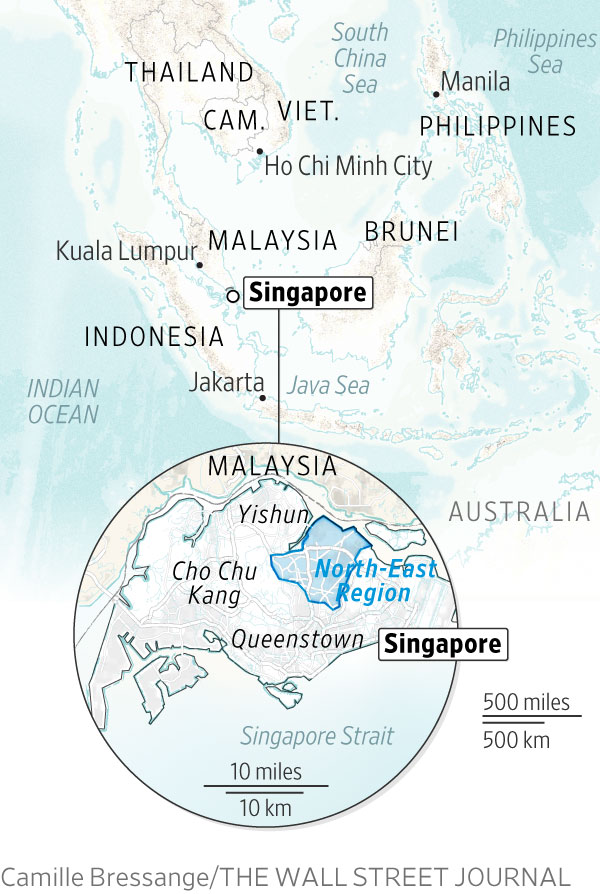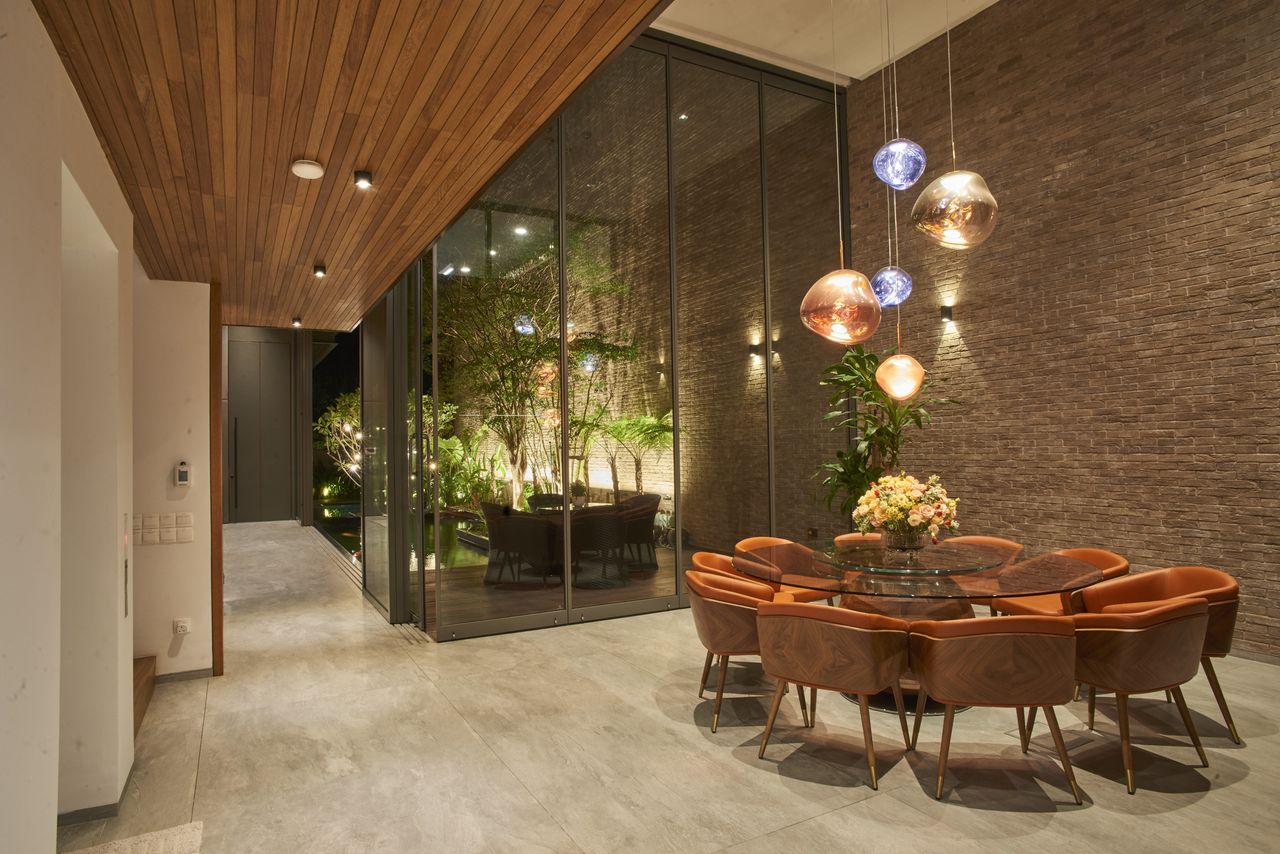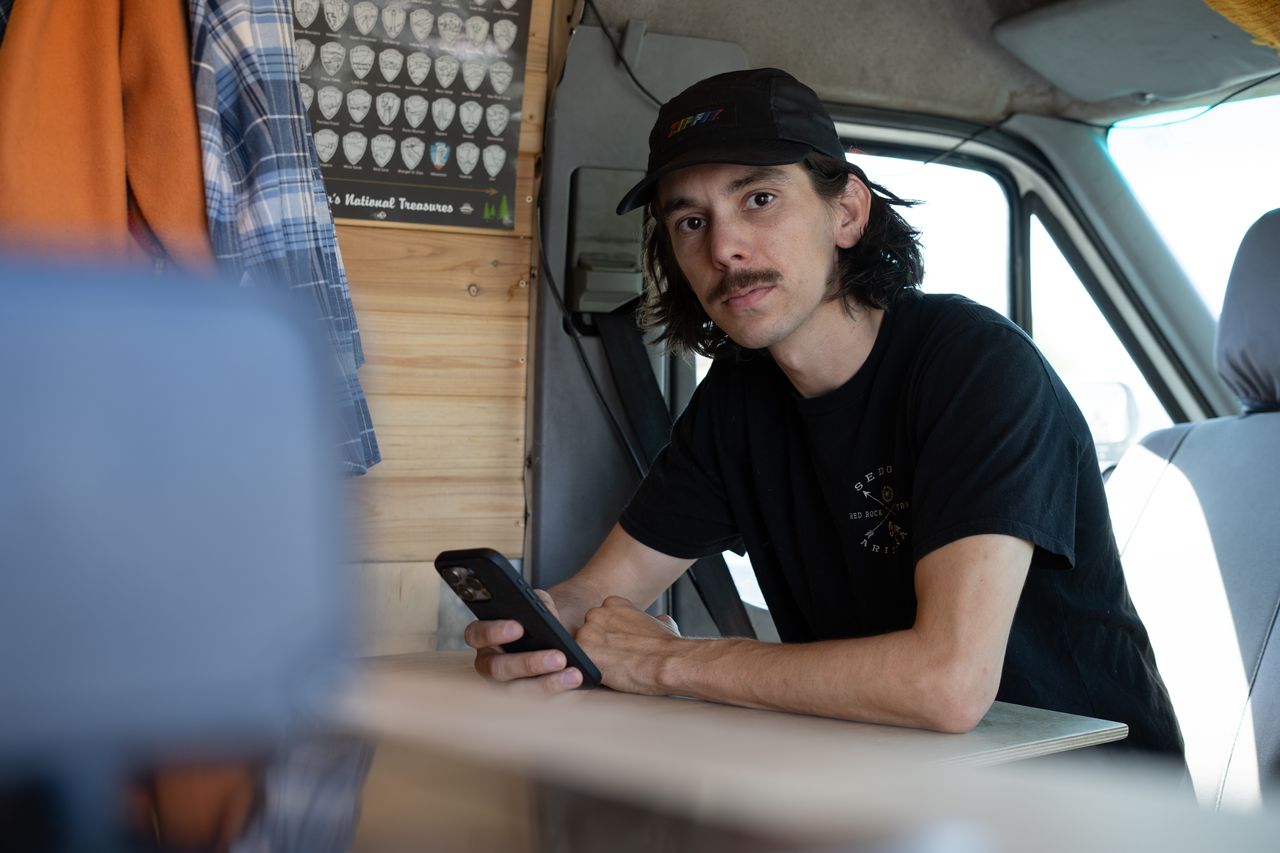In High-Rise Happy Singapore, a Luxury Single-Family Home Bucks the Trend
A local couple tore down their bungalow to create a four-story, seven-bedroom house for a total cost of $4.2 million
A single-family home is the exception to the rule in high-rise Singapore, where most of the city-state’s 5.5 million residents live in apartments. So when it came time for Mark Tan and Stella Gwee to trade in their starter bungalow for something larger and grander, they decided to stay put, tear down and begin again on their rare 1/10th-acre lot.
In 2009, Tan, now 48, and Gwee, 46, paid 2.2 million Singapore dollars, or about US$1.6 million, for their original 1,500-square-foot house, located in a single-family enclave in Singapore’s North-East region. The couple then spent $2.6 million to replace the three-bedroom, semidetached structure, built in a Balinese-fusion style, with a four-story, seven-bedroom brick house that combines Asian and Western elements across 7,400 square feet.
In all, Tan and Gwee have invested just over $4.2 million in their new home. Multi-bedroom Singapore homes of a similar size could sell now for twice that.
The couple—Gwee works with her husband, a local entrepreneur—began demolition in 2020, relocating with their two children, Xavier, now 17, and Andrea, 13, to a nearby rental for the two years of construction. The family, along with dogs Furry and Brownie, moved into the finished house in early 2022.
The new home’s standout feature is a landscaped vertical courtyard, rising nearly 40 feet. “A lot of Singaporeans won’t sacrifice the space to build a courtyard like this,” says Tan, a Singapore native, who grew up nearby.
Enclosed by a skylight, the space is outfitted at the top with a large industrial fan 8 feet in diameter that is powerful enough to ventilate a factory floor. Made by Southern California’s MacroAir, the fan helps the family keep cool in Singapore’s year-round tropical weather. It is part of a $74,000 climate-control system that allows every room individual air-conditioning units.

The flora-rich courtyard, featuring an indoor koi pond and fronted by an open-air outdoor swimming pool, opens to the street at its base between the pool and the pond. The house can be closed off and revert entirely to air conditioning on especially hot days.
The open-plan first floor includes living and dining areas, and has space enough for a Steinway piano for music student Andrea. The second floor is given over to a mahjong room that doubles as a guest bedroom and a study. The bedrooms are on the third floor. The fourth floor serves as a penthouse recreation room for the kids and their friends.
The elevator makes for easy transitions, but Tan says his health-conscious wife takes the stairs.
Windows and terraces orient the house around the courtyard. Designing an expansive vertical courtyard was a challenge, says the couple’s architect Han Loke Kwang, principal in Singapore’s HYLA Architects, which specializes in upscale single-family projects (or landed properties, as locals call them). Immense vertical spaces like this are seen in commercial structures but are unusual in a residential setting, says Han.
The goal in the Tan-Gwee home, he says, was “to make sure the scale of the courtyard wasn’t overwhelming.”
Foliage—chosen to flourish in the courtyard’s shaded conditions and kept fresh with an elaborate irrigation system—and the koi pond help ornament the space. The pond gives the first floor a waterfront feel.
The couple spent $148,000 on the pool and pond areas. Tan filled the pond with $59,000 worth of top-dwelling adult koi, mostly imported from Japan, and several bottom-dwelling freshwater stingrays, costing $22,000.
Singapore, which is smaller than Los Angeles County, is a blending of cultures, bringing together East Asian, South Asian and European influences. The Tan-Gwee home has a decidedly cosmopolitan flair, combining Italian designer furniture, British and Canadian lighting, kitchen appliances from Germany’s Miele, and bathroom details inspired by vacations in Dubai and the Maldives.
The fortresslike facade, which preserves the privacy of the home, is in keeping with Asian residential models, says Han.
Many of Han’s clients have two kitchens—an open area for Western-style cooking and a closed-off Asian-style cooking space with wok stations, requiring extra ventilation. While finishing the house, Tan and Gwee decided to forgo the planned Asian kitchen, converting it into a kitchen terrace equipped with an $11,000 barbecue.
Back inside, the kitchen was outfitted with a steam oven, two conventional ovens of different sizes and a built-in Miele coffee machine.
These are booming times in Singapore. The city-state now has a per capita GDP of more than $91,000, higher than anywhere else in Asia and one of the world’s strongest residential markets.
Overall residential real-estate prices rose 7.5% between the second quarters of 2022 and 2023, with those of landed residences increasing by 9.4% in the same period, says Nicholas Keong, senior director of Knight Frank’s Singapore affiliate. Also, Singapore came in first in Knight Frank’s Prime Global Rental Index—far exceeding London, New York, Monaco and Tokyo—with rent prices rising 28% in 2022.
The couple seem to have exhausted their wish list. When you have everything from three ovens to a stingray budget, there isn’t much left. What about a home spa? “No sauna here,” counters Tan, who relies on the primary bedroom’s three air conditioners to maintain comfort. “It’s already too hot in Singapore.”
OTHER COSTS
Foundation and framing: $589,400
Electrical work: $148,000
Designer Lighting: $74,000
Elevator: $88,400
Kitchen (including appliances): $222,000
Bathrooms (7): 148,000
Brickwork/masonry: $222,000
Glazing, including windows and sliding glass doors: $222,000
Landscaping, including indoor plants and irrigation: $73,700
 Copyright 2020, Dow Jones & Company, Inc. All Rights Reserved Worldwide. LEARN MORE
Copyright 2020, Dow Jones & Company, Inc. All Rights Reserved Worldwide. LEARN MORE
This stylish family home combines a classic palette and finishes with a flexible floorplan
Just 55 minutes from Sydney, make this your creative getaway located in the majestic Hawkesbury region.
As Paris makes its final preparations for the Olympic games, its residents are busy with their own—packing their suitcases, confirming their reservations, and getting out of town.
Worried about the hordes of crowds and overall chaos the Olympics could bring, Parisians are fleeing the city in droves and inundating resort cities around the country. Hotels and holiday rentals in some of France’s most popular vacation destinations—from the French Riviera in the south to the beaches of Normandy in the north—say they are expecting massive crowds this year in advance of the Olympics. The games will run from July 26-Aug. 1.
“It’s already a major holiday season for us, and beyond that, we have the Olympics,” says Stéphane Personeni, general manager of the Lily of the Valley hotel in Saint Tropez. “People began booking early this year.”
Personeni’s hotel typically has no issues filling its rooms each summer—by May of each year, the luxury hotel typically finds itself completely booked out for the months of July and August. But this year, the 53-room hotel began filling up for summer reservations in February.
“We told our regular guests that everything—hotels, apartments, villas—are going to be hard to find this summer,” Personeni says. His neighbours around Saint Tropez say they’re similarly booked up.
As of March, the online marketplace Gens de Confiance (“Trusted People”), saw a 50% increase in reservations from Parisians seeking vacation rentals outside the capital during the Olympics.
Already, August is a popular vacation time for the French. With a minimum of five weeks of vacation mandated by law, many decide to take the entire month off, renting out villas in beachside destinations for longer periods.
But beyond the typical August travel, the Olympics are having a real impact, says Bertille Marchal, a spokesperson for Gens de Confiance.
“We’ve seen nearly three times more reservations for the dates of the Olympics than the following two weeks,” Marchal says. “The increase is definitely linked to the Olympic Games.”

Getty Images
According to the site, the most sought-out vacation destinations are Morbihan and Loire-Atlantique, a seaside region in the northwest; le Var, a coastal area within the southeast of France along the Côte d’Azur; and the island of Corsica in the Mediterranean.
Meanwhile, the Olympics haven’t necessarily been a boon to foreign tourism in the country. Many tourists who might have otherwise come to France are avoiding it this year in favour of other European capitals. In Paris, demand for stays at high-end hotels has collapsed, with bookings down 50% in July compared to last year, according to UMIH Prestige, which represents hotels charging at least €800 ($865) a night for rooms.
Earlier this year, high-end restaurants and concierges said the Olympics might even be an opportunity to score a hard-get-seat at the city’s fine dining.
In the Occitanie region in southwest France, the overall number of reservations this summer hasn’t changed much from last year, says Vincent Gare, president of the regional tourism committee there.
“But looking further at the numbers, we do see an increase in the clientele coming from the Paris region,” Gare told Le Figaro, noting that the increase in reservations has fallen directly on the dates of the Olympic games.
Michel Barré, a retiree living in Paris’s Le Marais neighbourhood, is one of those opting for the beach rather than the opening ceremony. In January, he booked a stay in Normandy for two weeks.
“Even though it’s a major European capital, Paris is still a small city—it’s a massive effort to host all of these events,” Barré says. “The Olympics are going to be a mess.”
More than anything, he just wants some calm after an event-filled summer in Paris, which just before the Olympics experienced the drama of a snap election called by Macron.
“It’s been a hectic summer here,” he says.

AFP via Getty Images
Parisians—Barré included—feel that the city, by over-catering to its tourists, is driving out many residents.
Parts of the Seine—usually one of the most popular summertime hangout spots —have been closed off for weeks as the city installs bleachers and Olympics signage. In certain neighbourhoods, residents will need to scan a QR code with police to access their own apartments. And from the Olympics to Sept. 8, Paris is nearly doubling the price of transit tickets from €2.15 to €4 per ride.
The city’s clear willingness to capitalise on its tourists has motivated some residents to do the same. In March, the number of active Airbnb listings in Paris reached an all-time high as hosts rushed to list their apartments. Listings grew 40% from the same time last year, according to the company.
With their regular clients taking off, Parisian restaurants and merchants are complaining that business is down.
“Are there any Parisians left in Paris?” Alaine Fontaine, president of the restaurant industry association, told the radio station Franceinfo on Sunday. “For the last three weeks, there haven’t been any here.”
Still, for all the talk of those leaving, there are plenty who have decided to stick around.
Jay Swanson, an American expat and YouTuber, can’t imagine leaving during the Olympics—he secured his tickets to see ping pong and volleyball last year. He’s also less concerned about the crowds and road closures than others, having just put together a series of videos explaining how to navigate Paris during the games.
“It’s been 100 years since the Games came to Paris; when else will we get a chance to host the world like this?” Swanson says. “So many Parisians are leaving and tourism is down, so not only will it be quiet but the only people left will be here for a party.”
This stylish family home combines a classic palette and finishes with a flexible floorplan
Just 55 minutes from Sydney, make this your creative getaway located in the majestic Hawkesbury region.






















